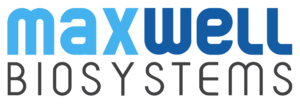MaxTwo High-Density Microelectrode Array (HD-MEA) System
Maximize Your Cell Functional Assays

MaxTwo – your next-generation multiwell high-density microelectrode array system for recording and stimulating electrogenic cells in vitro.
Key Features
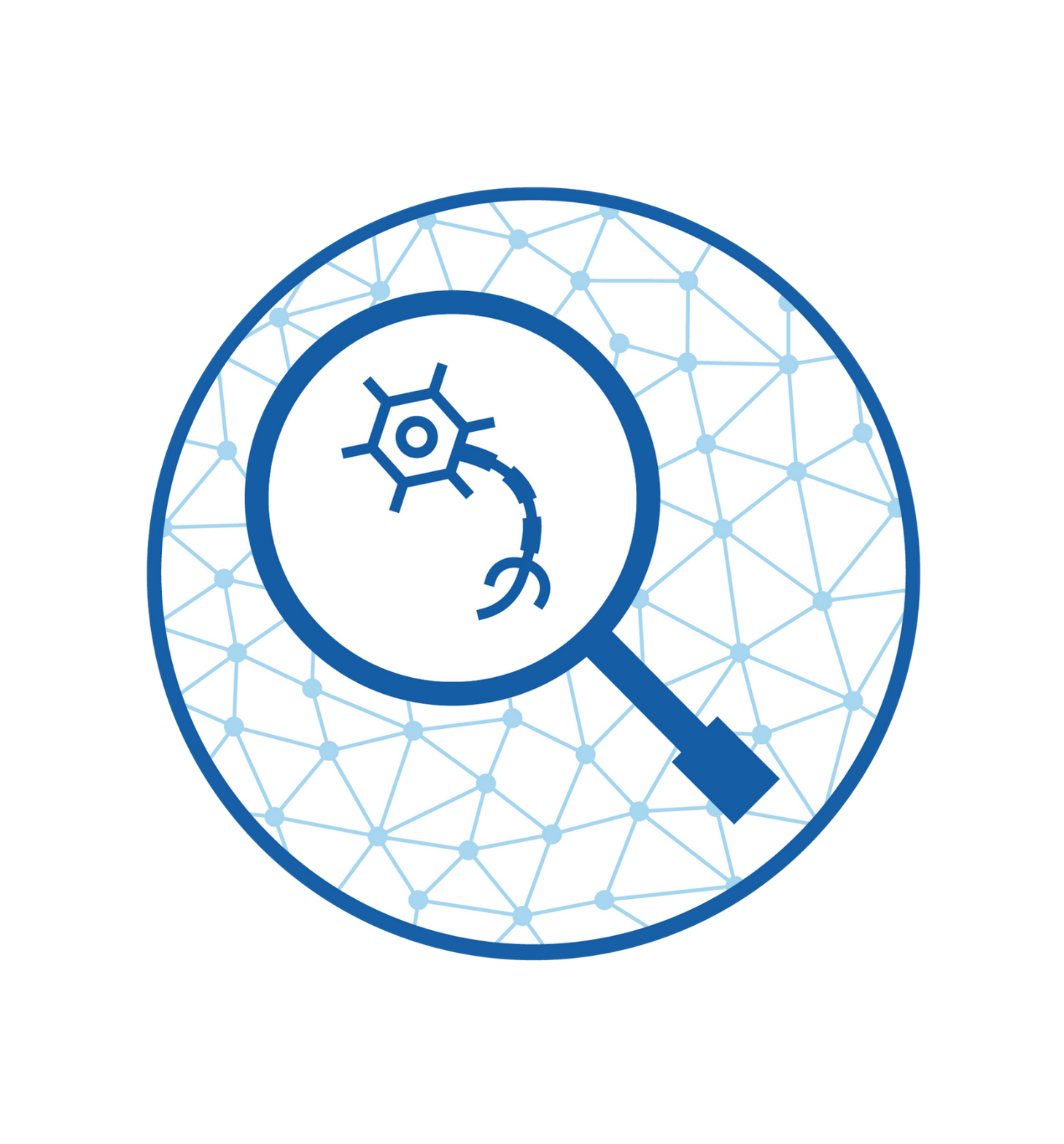

High-resolution and high-quality data while tracking dynamic changes at cellular, subcellular and network levels.


Smallest signals capture (uV) thanks to low-noise recording channels and high electrode density.


Recording from 6 and 24 wells, increasing test capabilities and decreasing experimental time, while ensuring consistency across wells.


Optimized recordings strategies to analyze the entire culture at individual neuronal levels, increasing data reproducibility and statistical power.
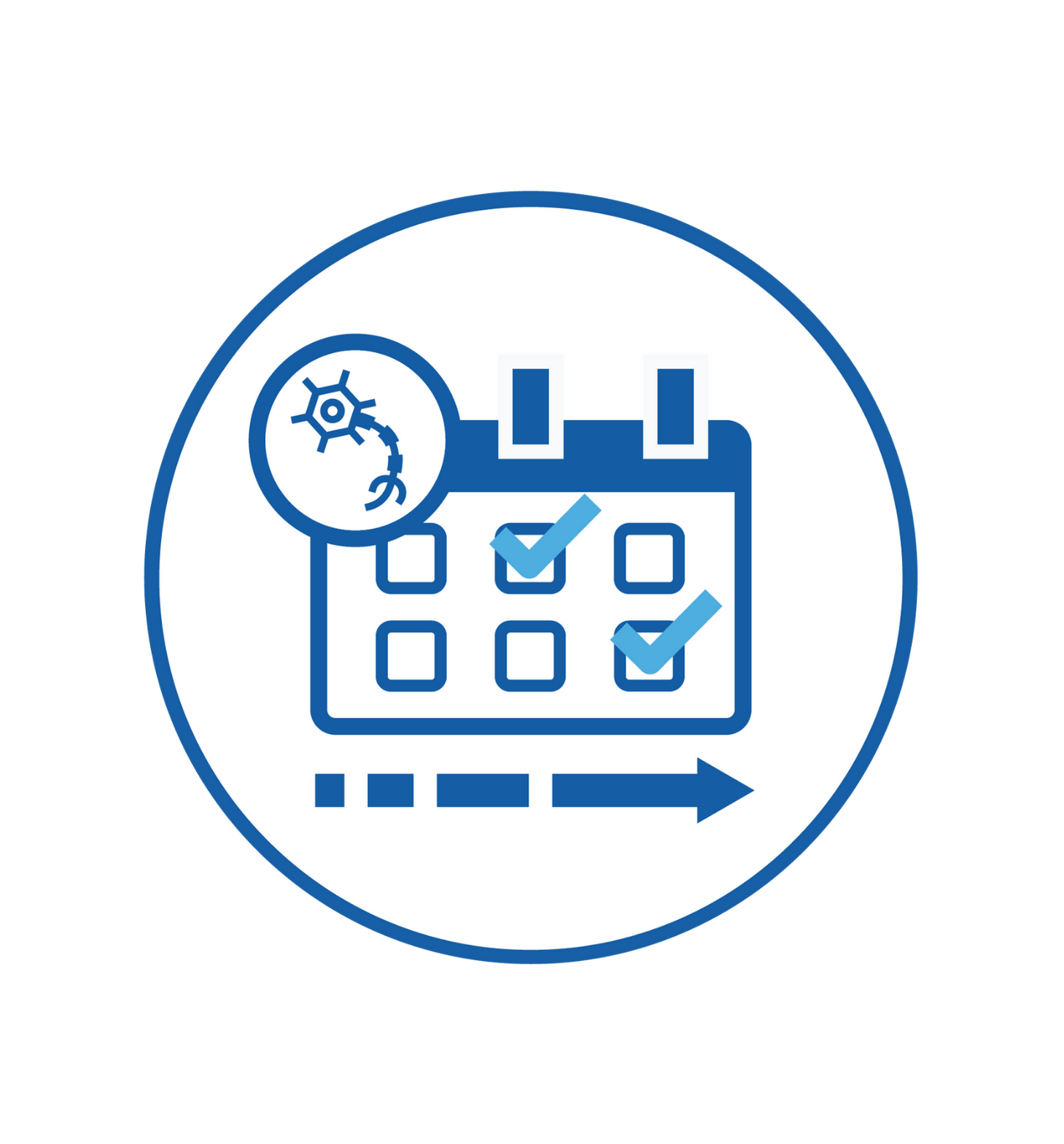

Cell development, maturation, or compound effects access by performing longitudinal experiments over the course of days, weeks, and months.
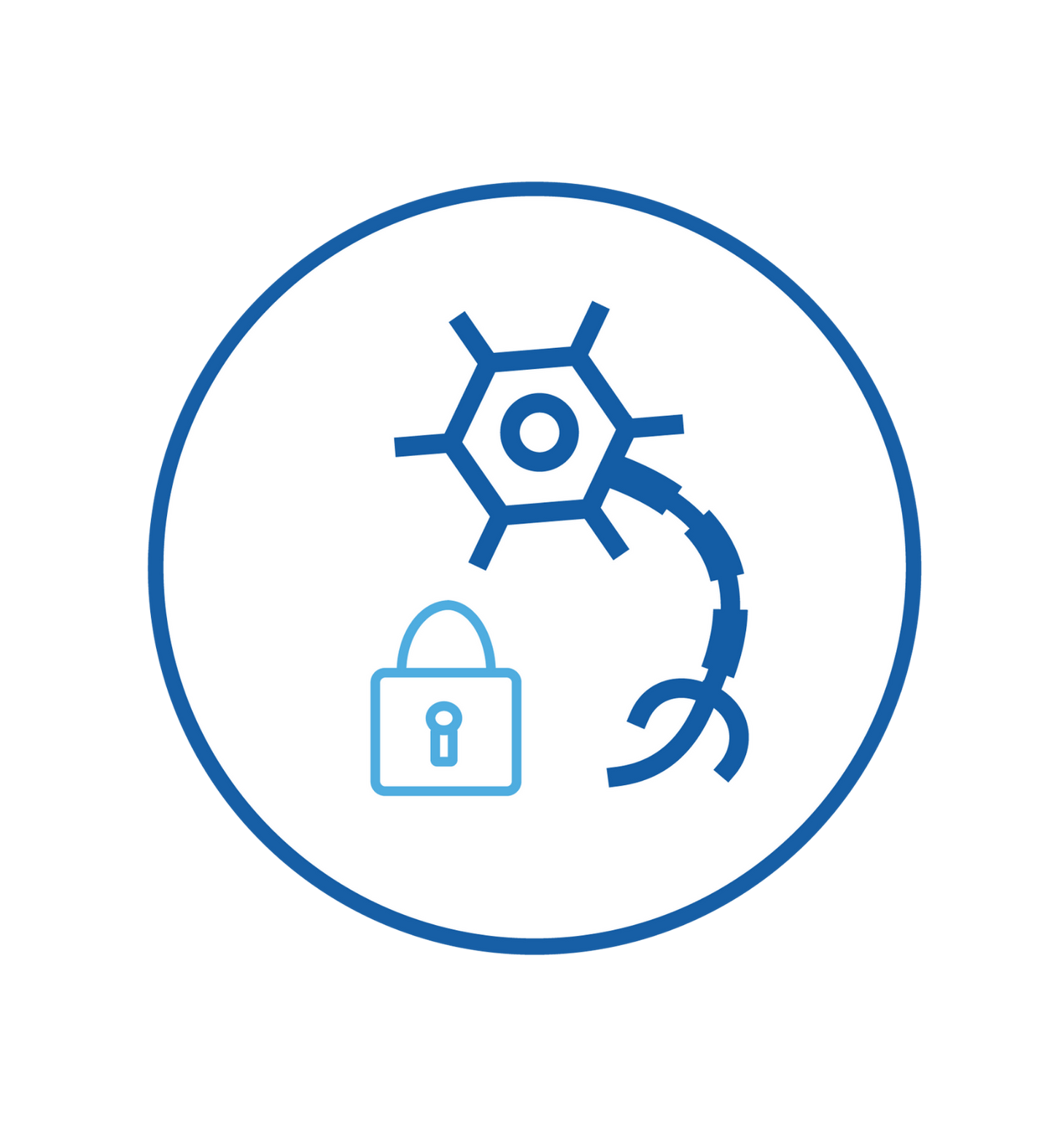

Non-invasive and label-free recordings, eliminating any potential side effects associated with the use of dyes and prolonged exposure to light.
Product Overview
MaxTwo HD-MEAs represent the next-generation electrophysiology platform, featuring densely packed microelectrodes capable of capturing the electrical signature of electrogenic cells with unprecedented precision. Its exceptional data quality enables you to drive fast and meaningful conclusions in our cell-based assays.
Featuring 26’400 electrodes within a large sensor area of 3.85 x 2.10 mm2 per well, MaxTwo HD-MEAs measure the activity of cells across multiple scales – capturing whole network dynamics and identifying single cell function. With high electrode resolution and low noise, spikes generated by any neuron on the array can be picked up by an electrode in close vicinity. Such sensitivity enables to detect cells’ small signals, such as induced pluripotent stem cell (iPSC)-derived neurons and propagating action potentials along axonal arbors.
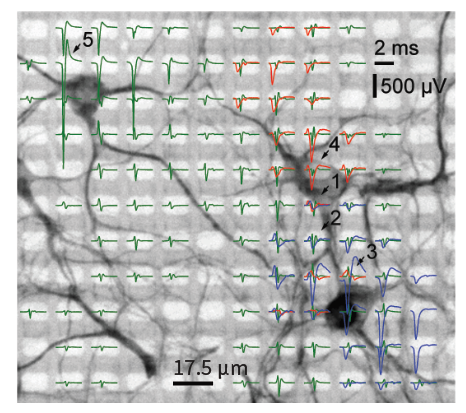

3’625 Electrodes/mm2
Low-Noise Readouts
Flexible Electrical Stimulation
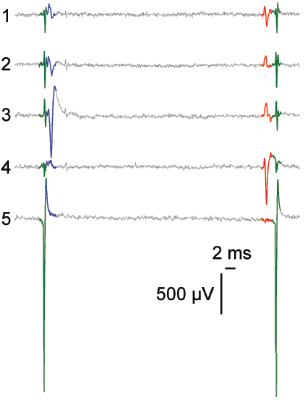

Network level
Cellular level
Subcellular level
MaxTwo System


| MaxTwo System Features | ||
| One-button interface | Open/close the cover Turn on/off the system Lock the well plate | |
| System status indicator | LED | |
| Dimension (LxWxH) | 40 x 16 x 12 cm3 | |
| Well-Plate compatibility | 6- and 24-Well Plate | |
| Temperature control | Yes | |
| CO2 control | Yes, via gas mixer |
MaxTwo Well Plates


MaxTwo HD-MEA System is compatible with 6- and 24-Well Plates, increasing test capabilities and decreasing experimental time, while ensuring consistency across wells.
Learn About MaxTwo Well PlatesThis might also interest you

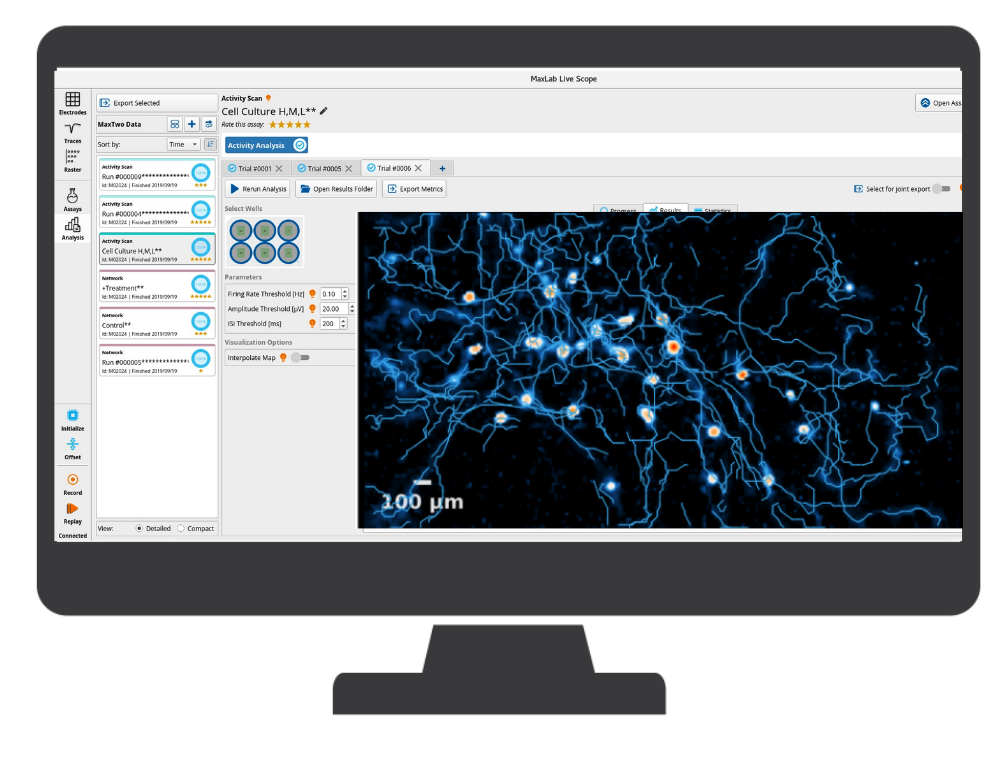

Publications Featuring MaxTwo
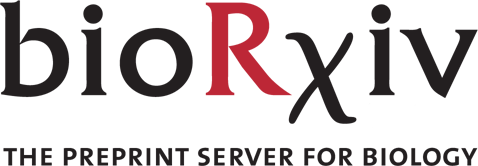  | Tetzlaff, Svenja K; Reyhan, Ekin; Bengtson, Peter C; Schroers, Julian; Wagner, Julia; Schubert, Marc C; Layer, Nikolas; Puschhof, Maria C; Faymonville, Anton J; Drewa, Nina; Pramatarov, Rangel L; Wissmann, Niklas; Alhalabi, Obada; Heuer, Alina; Sivapalan, Nirosan; Campos, Joaquín; Boztepe, Berin; Scheck, Jonas G; Villa, Giulia; Schröter, Manuel; Sahm, Felix; Forsberg-Nilsson, Karin; Breckwoldt, Michael O; Acuna, Claudio; Suchorska, Bogdana; Heiland, Dieter Henrik; Saez-Rodriguez, Julio; Venkataramani, Varun Characterizing and targeting glioblastoma neuron-tumor networks with retrograde tracing Journal Article bioRxiv, 2024. @article{Tetzlaff2024, title = {Characterizing and targeting glioblastoma neuron-tumor networks with retrograde tracing}, author = {Svenja K. Tetzlaff and Ekin Reyhan and C. Peter Bengtson and Julian Schroers and Julia Wagner and Marc C. Schubert and Nikolas Layer and Maria C. Puschhof and Anton J. Faymonville and Nina Drewa and Rangel L. Pramatarov and Niklas Wissmann and Obada Alhalabi and Alina Heuer and Nirosan Sivapalan and Joaquín Campos and Berin Boztepe and Jonas G. Scheck and Giulia Villa and Manuel Schröter and Felix Sahm and Karin Forsberg-Nilsson and Michael O. Breckwoldt and Claudio Acuna and Bogdana Suchorska and Dieter Henrik Heiland and Julio Saez-Rodriguez and Varun Venkataramani}, url = {http://biorxiv.org/lookup/doi/10.1101/2024.03.18.585565}, doi = {10.1101/2024.03.18.585565}, year = {2024}, date = {2024-03-22}, journal = {bioRxiv}, abstract = {Glioblastomas are invasive brain tumors with high therapeutic resistance. Neuron-to-glioma synapses have been shown to promote glioblastoma progression. However, a characterization of tumor-connected neurons has been hampered by a lack of technologies. Here, we adapted retrograde tracing using rabies viruses to investigate and manipulate neuron-tumor networks. Glioblastoma rapidly integrated into neural circuits across the brain engaging in widespread functional communication, with acetylcholinergic neurons driving glioblastoma invasion. We uncovered patient-specific and tumor cell state-dependent differences in synaptogenic gene expression associated with neuron-tumor connectivity and subsequent invasivity. Importantly, radiotherapy enhanced neuron-tumor connectivity by increased neuronal activity. In turn, simultaneous neuronal activity inhibition and radiotherapy showed increased therapeutic effects, indicative of a role for neuron-to-glioma synapses in contributing to therapeutic resistance. Lastly, rabies-mediated genetic ablation of tumor-connected neurons halted glioblastoma progression, offering a viral strategy to tackle glioblastoma. Together, this study provides a framework to comprehensively characterize neuron-tumor networks and target glioblastoma.}, keywords = {}, pubstate = {published}, tppubtype = {article} } Glioblastomas are invasive brain tumors with high therapeutic resistance. Neuron-to-glioma synapses have been shown to promote glioblastoma progression. However, a characterization of tumor-connected neurons has been hampered by a lack of technologies. Here, we adapted retrograde tracing using rabies viruses to investigate and manipulate neuron-tumor networks. Glioblastoma rapidly integrated into neural circuits across the brain engaging in widespread functional communication, with acetylcholinergic neurons driving glioblastoma invasion. We uncovered patient-specific and tumor cell state-dependent differences in synaptogenic gene expression associated with neuron-tumor connectivity and subsequent invasivity. Importantly, radiotherapy enhanced neuron-tumor connectivity by increased neuronal activity. In turn, simultaneous neuronal activity inhibition and radiotherapy showed increased therapeutic effects, indicative of a role for neuron-to-glioma synapses in contributing to therapeutic resistance. Lastly, rabies-mediated genetic ablation of tumor-connected neurons halted glioblastoma progression, offering a viral strategy to tackle glioblastoma. Together, this study provides a framework to comprehensively characterize neuron-tumor networks and target glioblastoma. |
  | Sawada, Tomoyo; Barbosa, André R; Araujo, Bruno; McCord, Alejandra E; D’Ignazio, Laura; Benjamin, Kynon J M; Sheehan, Bonna; Zabolocki, Michael; Feltrin, Arthur; Arora, Ria; Brandtjen, Anna C; Kleinman, Joel E; Hyde, Thomas M; Bardy, Cedric; Weinberger, Daniel R; Paquola, Apuã C M; Erwin, Jennifer A American Journal of Psychiatry, 2023, ISSN: 0002-953X. @article{Tomoyo2023, title = {Recapitulation of Perturbed Striatal Gene Expression Dynamics of Donor’s Brains With Ventral Forebrain Organoids Derived From the Same Individuals With Schizophrenia}, author = {Tomoyo Sawada and André R. Barbosa and Bruno Araujo and Alejandra E. McCord and Laura D’Ignazio and Kynon J.M. Benjamin and Bonna Sheehan and Michael Zabolocki and Arthur Feltrin and Ria Arora and Anna C. Brandtjen and Joel E. Kleinman and Thomas M. Hyde and Cedric Bardy and Daniel R. Weinberger and Apuã C.M. Paquola and Jennifer A. Erwin}, url = {https://ajp.psychiatryonline.org/doi/10.1176/appi.ajp.20220723}, doi = {10.1176/appi.ajp.20220723}, issn = {0002-953X}, year = {2023}, date = {2023-11-02}, journal = {American Journal of Psychiatry}, abstract = {Objective: Schizophrenia is a brain disorder that originates during neurodevelopment and has complex genetic and environmental etiologies. Despite decades of clinical evidence of altered striatal function in affected patients, studies examining its cellular and molecular mechanisms in humans are limited. To explore neurodevelopmental alterations in the striatum associated with schizophrenia, the authors established a method for the differentiation of induced pluripotent stem cells (iPSCs) into ventral forebrain organoids (VFOs). Methods: VFOs were generated from postmortem dural fibroblast–derived iPSCs of four individuals with schizophrenia and four neurotypical control individuals for whom postmortem caudate genotypes and transcriptomic data were profiled in the BrainSeq neurogenomics consortium. Individuals were selected such that the two groups had nonoverlapping schizophrenia polygenic risk scores (PRSs). Results: Single-cell RNA sequencing analyses of VFOs revealed differences in developmental trajectory between schizophrenia and control individuals in which inhibitory neuronal cells from the patients exhibited accelerated maturation. Furthermore, upregulated genes in inhibitory neurons in schizophrenia VFOs showed a significant overlap with upregulated genes in postmortem caudate tissue of individuals with schizophrenia compared with control individuals, including the donors of the iPSC cohort. Conclusions: The findings suggest that striatal neurons derived from high-PRS individuals with schizophrenia carry abnormalities that originated during early brain development and that the VFO model can recapitulate disease-relevant cell type–specific neurodevelopmental phenotypes in a dish.}, keywords = {}, pubstate = {published}, tppubtype = {article} } Objective: Schizophrenia is a brain disorder that originates during neurodevelopment and has complex genetic and environmental etiologies. Despite decades of clinical evidence of altered striatal function in affected patients, studies examining its cellular and molecular mechanisms in humans are limited. To explore neurodevelopmental alterations in the striatum associated with schizophrenia, the authors established a method for the differentiation of induced pluripotent stem cells (iPSCs) into ventral forebrain organoids (VFOs). Methods: VFOs were generated from postmortem dural fibroblast–derived iPSCs of four individuals with schizophrenia and four neurotypical control individuals for whom postmortem caudate genotypes and transcriptomic data were profiled in the BrainSeq neurogenomics consortium. Individuals were selected such that the two groups had nonoverlapping schizophrenia polygenic risk scores (PRSs). Results: Single-cell RNA sequencing analyses of VFOs revealed differences in developmental trajectory between schizophrenia and control individuals in which inhibitory neuronal cells from the patients exhibited accelerated maturation. Furthermore, upregulated genes in inhibitory neurons in schizophrenia VFOs showed a significant overlap with upregulated genes in postmortem caudate tissue of individuals with schizophrenia compared with control individuals, including the donors of the iPSC cohort. Conclusions: The findings suggest that striatal neurons derived from high-PRS individuals with schizophrenia carry abnormalities that originated during early brain development and that the VFO model can recapitulate disease-relevant cell type–specific neurodevelopmental phenotypes in a dish. |
  | Kelley, Matt R; Chipman, Laura B; Asano, Shoh; Knott, Matthew; Howard, Samantha T; Berg, Allison P bioRxiv, 2023. @article{Kelley2023, title = {Potentiating NaV1.1 in Dravet syndrome patient iPSC-derived GABAergic neurons increases neuronal firing frequency and decreases network synchrony}, author = {Matt R Kelley and Laura B Chipman and Shoh Asano and Matthew Knott and Samantha T Howard and Allison P Berg}, url = {https://www.biorxiv.org/content/10.1101/2023.09.28.559990v1}, doi = {10.1101/2023.09.28.559990}, year = {2023}, date = {2023-09-29}, journal = {bioRxiv}, abstract = {Dravet syndrome is a developmental and epileptic encephalopathy characterized by seizures, behavioral abnormalities, developmental deficits, and elevated risk of sudden unexpected death in epilepsy (SUDEP). Most patient cases are caused by de novo loss-of-function mutations in the gene SCN1A, causing a haploinsufficiency of the alpha subunit of the voltage-gated sodium channel NaV1.1. Within the brain, NaV1.1 is primarily localized to the axons of inhibitory neurons, and decreased NaV1.1 function is hypothesized to reduce GABAergic inhibitory neurotransmission within the brain, driving neuronal network hyperexcitability and subsequent pathology. We have developed a human in vitro model of Dravet syndrome using differentiated neurons derived from patient iPSC and enriched for GABA expressing neurons. Neurons were plated on high definition multielectrode arrays (HD-MEAs), permitting recordings from the same cultures over the 7-weeks duration of study at the network, single cell, and subcellular resolution. Using this capability, we characterized the features of axonal morphology and physiology. Neurons developed increased spiking activity and synchronous network bursting. Recordings were processed through a spike sorting pipeline for curation of single unit activity and to assess the effects of pharmacological treatments. At 7-weeks, the application of the GABAAR receptor agonist muscimol eliminated network bursting, indicating the presence of GABAergic neurotransmission. To identify the role of NaV1.1 on neuronal and network activity, cultures were treated with a dose-response of the NaV1.1 potentiator δ-theraphotoxin-Hm1a. This resulted in a strong increase in firing rates of putative GABAergic neurons, an increase in the intraburst firing rate, and eliminated network bursting. These results validate that potentiation of NaV1.1 in Dravet patient iPSC-derived neurons results in decreased firing synchrony in neuronal networks through increased GABAergic neuron activity and support the use of human neurons and HD-MEAs as viable high-throughput electrophysiological platform to enable therapeutic discovery.}, keywords = {}, pubstate = {published}, tppubtype = {article} } Dravet syndrome is a developmental and epileptic encephalopathy characterized by seizures, behavioral abnormalities, developmental deficits, and elevated risk of sudden unexpected death in epilepsy (SUDEP). Most patient cases are caused by de novo loss-of-function mutations in the gene SCN1A, causing a haploinsufficiency of the alpha subunit of the voltage-gated sodium channel NaV1.1. Within the brain, NaV1.1 is primarily localized to the axons of inhibitory neurons, and decreased NaV1.1 function is hypothesized to reduce GABAergic inhibitory neurotransmission within the brain, driving neuronal network hyperexcitability and subsequent pathology. We have developed a human in vitro model of Dravet syndrome using differentiated neurons derived from patient iPSC and enriched for GABA expressing neurons. Neurons were plated on high definition multielectrode arrays (HD-MEAs), permitting recordings from the same cultures over the 7-weeks duration of study at the network, single cell, and subcellular resolution. Using this capability, we characterized the features of axonal morphology and physiology. Neurons developed increased spiking activity and synchronous network bursting. Recordings were processed through a spike sorting pipeline for curation of single unit activity and to assess the effects of pharmacological treatments. At 7-weeks, the application of the GABAAR receptor agonist muscimol eliminated network bursting, indicating the presence of GABAergic neurotransmission. To identify the role of NaV1.1 on neuronal and network activity, cultures were treated with a dose-response of the NaV1.1 potentiator δ-theraphotoxin-Hm1a. This resulted in a strong increase in firing rates of putative GABAergic neurons, an increase in the intraburst firing rate, and eliminated network bursting. These results validate that potentiation of NaV1.1 in Dravet patient iPSC-derived neurons results in decreased firing synchrony in neuronal networks through increased GABAergic neuron activity and support the use of human neurons and HD-MEAs as viable high-throughput electrophysiological platform to enable therapeutic discovery. |
  | Lin, Waka; Shiomoto, Shusaku; Yamada, Saki; Watanabe, Hikaru; Kawashima, Yudai; Eguchi, Yuichi; Muramatsu, Koichi; Sekino, Yuko Dendritic spine formation and synapse maturation in transcription factor-induced human iPSC-derived neurons Journal Article iScience, 2023. @article{Lin2023, title = {Dendritic spine formation and synapse maturation in transcription factor-induced human iPSC-derived neurons}, author = {Waka Lin and Shusaku Shiomoto and Saki Yamada and Hikaru Watanabe and Yudai Kawashima and Yuichi Eguchi and Koichi Muramatsu and Yuko Sekino}, url = {https://pubmed.ncbi.nlm.nih.gov/37034988/}, year = {2023}, date = {2023-02-27}, journal = {iScience}, abstract = {Synaptic maturation is reportedly limited in human induced pluripotent stem cell (iPSC)-derived neurons. Notably, their ability to reach postnatal-like stages and form dendritic spines has been difficult to demonstrate unless using long-term cultured organoids. Recent transcription factor (TF)-based induction methods allow the accelerated generation of differentiated neurons, which offers an unprecedented opportunity to address further progression into late developmental stages. Herein, we report on a comprehensive time-course study of TF-induced iPSC neurons cultured in vitro through an intrinsic maturation program following neurogenesis. Moreover, we determined the transcriptional and morphological sequences of key developmental events associated with spinogenesis, including the conversion of drebrin to its brain-specific isoform A and the N-methyl-D-aspartate (NMDA) receptor subunit switch. TF-induced iPSC neurons successfully acquired structural and functional synaptic maturity, which will critically expand their utility in modeling higher brain functions and disorders.}, keywords = {}, pubstate = {published}, tppubtype = {article} } Synaptic maturation is reportedly limited in human induced pluripotent stem cell (iPSC)-derived neurons. Notably, their ability to reach postnatal-like stages and form dendritic spines has been difficult to demonstrate unless using long-term cultured organoids. Recent transcription factor (TF)-based induction methods allow the accelerated generation of differentiated neurons, which offers an unprecedented opportunity to address further progression into late developmental stages. Herein, we report on a comprehensive time-course study of TF-induced iPSC neurons cultured in vitro through an intrinsic maturation program following neurogenesis. Moreover, we determined the transcriptional and morphological sequences of key developmental events associated with spinogenesis, including the conversion of drebrin to its brain-specific isoform A and the N-methyl-D-aspartate (NMDA) receptor subunit switch. TF-induced iPSC neurons successfully acquired structural and functional synaptic maturity, which will critically expand their utility in modeling higher brain functions and disorders. |
  | Qian, Junming; Guan, Xiaonan; Xie, Bing; Xu, Chuanyun; Niu, Jacqueline; Tang, Xin; Li, Charles H; Colecraft, Henry M; Jaenisch, Rudolf; Liu, Shawn X Multiplex epigenome editing of MECP2 to rescue Rett syndrome neurons Journal Article Science Translational Medicine, 2023. @article{Qian2023, title = {Multiplex epigenome editing of MECP2 to rescue Rett syndrome neurons}, author = {Junming Qian and Xiaonan Guan and Bing Xie and Chuanyun Xu and Jacqueline Niu and Xin Tang and Charles H. Li and Henry M. Colecraft and Rudolf Jaenisch and X. Shawn Liu}, url = {https://www.science.org/doi/10.1126/scitranslmed.add4666}, doi = {10.1126/scitranslmed.add4666}, year = {2023}, date = {2023-01-18}, journal = {Science Translational Medicine}, abstract = {Rettsyndrome(RTT)isanX-linkedneurodevelopmental disorder caused byloss-of-function heterozygous mutationsofmethyl CpG-binding protein2(MECP2) ontheXchromosome inyoungfemales. Reactivationofthe silent wild-type MECP2 allelefromtheinactiveXchromosome (Xi)represents apromising therapeutic opportunity forfemale patients withRTT.Here,weapplied amultiple xepigenome editing approachtoreactivate MECP2 fromXiinRTThuman embryonicstemcells(hESCs) andderivedneurons.Demethyla tionofthe MECP2 promoter bydCas9-T et1withtarget single-guide RNAreactivatedMECP2 fromXiinRTThESCs without detectable off-target effects atthetranscriptional level.Neuronsderivedfrommethyla tion-edited RTThESCs maintained MECP2 reactivationandreversedthesmaller somasizeandelectrophysiological abnormalities, twohallmarks ofRTT.InRTTneurons,insulationofthemethyla tion-edited MECP2 locusbydCpf1-CT CF (acatalytically deadCpf1fusedwithCCCTC-binding factor)withtarget CRISPR RNAenhanced MECP2 reactivationandrescued RTT-relatedneuronaldefects, providing aproof-of-concept studyforepigenome editing to treatRTTandpotentially otherdominant X-linkeddiseases.}, keywords = {}, pubstate = {published}, tppubtype = {article} } Rettsyndrome(RTT)isanX-linkedneurodevelopmental disorder caused byloss-of-function heterozygous mutationsofmethyl CpG-binding protein2(MECP2) ontheXchromosome inyoungfemales. Reactivationofthe silent wild-type MECP2 allelefromtheinactiveXchromosome (Xi)represents apromising therapeutic opportunity forfemale patients withRTT.Here,weapplied amultiple xepigenome editing approachtoreactivate MECP2 fromXiinRTThuman embryonicstemcells(hESCs) andderivedneurons.Demethyla tionofthe MECP2 promoter bydCas9-T et1withtarget single-guide RNAreactivatedMECP2 fromXiinRTThESCs without detectable off-target effects atthetranscriptional level.Neuronsderivedfrommethyla tion-edited RTThESCs maintained MECP2 reactivationandreversedthesmaller somasizeandelectrophysiological abnormalities, twohallmarks ofRTT.InRTTneurons,insulationofthemethyla tion-edited MECP2 locusbydCpf1-CT CF (acatalytically deadCpf1fusedwithCCCTC-binding factor)withtarget CRISPR RNAenhanced MECP2 reactivationandrescued RTT-relatedneuronaldefects, providing aproof-of-concept studyforepigenome editing to treatRTTandpotentially otherdominant X-linkeddiseases. |
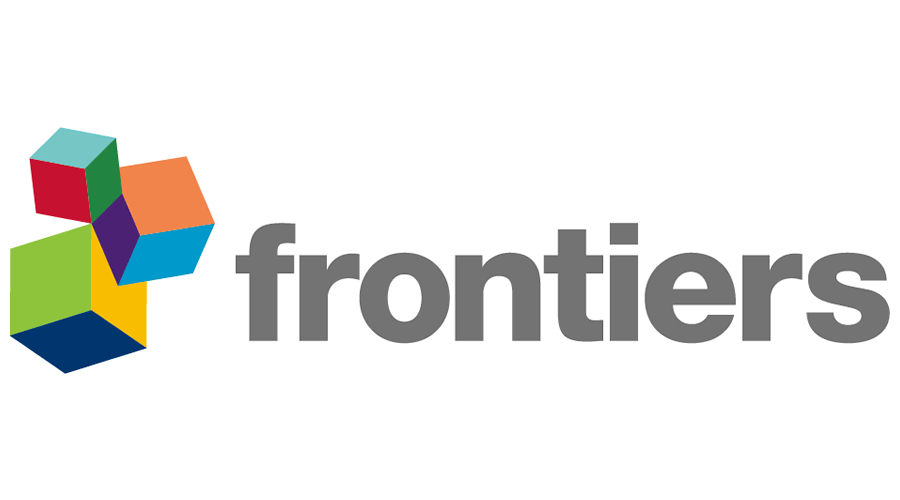  | Kim, Taehoon; Chen, Dexiong; Hornauer, Philipp; Emmenegger, Vishalini; Bartram, Julian; Ronchi, Silvia; Hierlemann, Andreas; Schröter, Manuel; Roqueiro, Damian Predicting in vitro single-neuron firing rates upon pharmacological perturbation using Graph Neural Networks Journal Article Frontiers in Neuroinformatics, 2023. @article{Taehoon2023, title = {Predicting in vitro single-neuron firing rates upon pharmacological perturbation using Graph Neural Networks}, author = {Taehoon Kim and Dexiong Chen and Philipp Hornauer and Vishalini Emmenegger and Julian Bartram and Silvia Ronchi and Andreas Hierlemann and Manuel Schröter and Damian Roqueiro}, url = {https://www.frontiersin.org/articles/10.3389/fninf.2022.1032538/full}, doi = {10.3389/fninf.2022.1032538}, year = {2023}, date = {2023-01-11}, journal = {Frontiers in Neuroinformatics}, abstract = {Modern Graph Neural Networks (GNNs) provide opportunities to study the determinants underlying the complex activity patterns of biological neuronal networks. In this study, we applied GNNs to a large-scale electrophysiological dataset of rodent primary neuronal networks obtained by means of high-density microelectrode arrays (HD-MEAs). HD-MEAs allow for long-term recording of extracellular spiking activity of individual neurons and networks and enable the extraction of physiologically relevant features at the single- neuron and population level. We employed established GNNs to generate a combined representation of single-neuron and connectivity features obtained from HD-MEA data, with the ultimate goal of predicting changes in single-neuron firing rate induced by a pharmacological perturbation. The aim of the main prediction task was to assess whether single-neuron and functional connectivity features, inferred under baseline conditions, were informative for predicting changes in neuronal activity in response to a perturbation with Bicuculline, a GABAA receptor antagonist. Our results suggest that the joint representation of node features and functional connectivity, extracted from a baseline recording, was informative for predicting firing rate changes of individual neurons after the perturbation. Specifically, our implementation of a GNN model with inductive learning capability (GraphSAGE) outperformed other prediction models that relied only on single-neuron features. We tested the generalizability of the results on two additional datasets of HD-MEA recordings–a second dataset with cultures perturbed with Bicuculline and a dataset perturbed with the GABAA receptor antagonist Gabazine. GraphSAGE models showed improved prediction accuracy over other prediction models. Our results demonstrate the added value of taking into account the functional connectivity between neurons and the potential of GNNs to study complex interactions between neurons.}, keywords = {}, pubstate = {published}, tppubtype = {article} } Modern Graph Neural Networks (GNNs) provide opportunities to study the determinants underlying the complex activity patterns of biological neuronal networks. In this study, we applied GNNs to a large-scale electrophysiological dataset of rodent primary neuronal networks obtained by means of high-density microelectrode arrays (HD-MEAs). HD-MEAs allow for long-term recording of extracellular spiking activity of individual neurons and networks and enable the extraction of physiologically relevant features at the single- neuron and population level. We employed established GNNs to generate a combined representation of single-neuron and connectivity features obtained from HD-MEA data, with the ultimate goal of predicting changes in single-neuron firing rate induced by a pharmacological perturbation. The aim of the main prediction task was to assess whether single-neuron and functional connectivity features, inferred under baseline conditions, were informative for predicting changes in neuronal activity in response to a perturbation with Bicuculline, a GABAA receptor antagonist. Our results suggest that the joint representation of node features and functional connectivity, extracted from a baseline recording, was informative for predicting firing rate changes of individual neurons after the perturbation. Specifically, our implementation of a GNN model with inductive learning capability (GraphSAGE) outperformed other prediction models that relied only on single-neuron features. We tested the generalizability of the results on two additional datasets of HD-MEA recordings–a second dataset with cultures perturbed with Bicuculline and a dataset perturbed with the GABAA receptor antagonist Gabazine. GraphSAGE models showed improved prediction accuracy over other prediction models. Our results demonstrate the added value of taking into account the functional connectivity between neurons and the potential of GNNs to study complex interactions between neurons. |
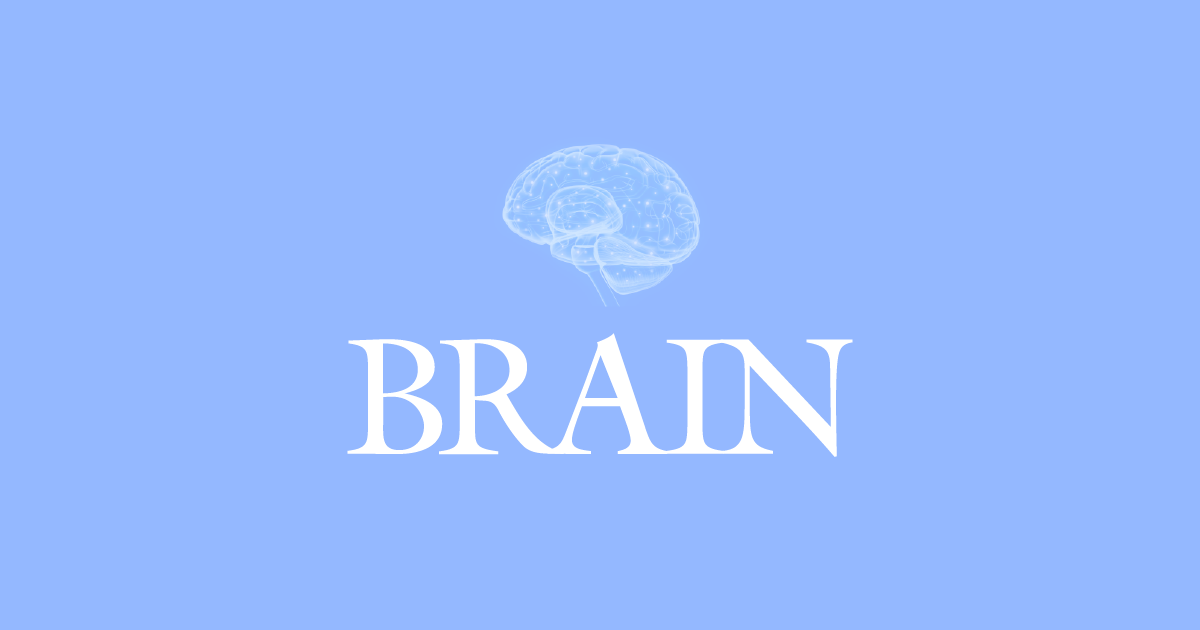  | Lent, Jonas Van; Vendredy, Leen; Adriaenssens, Elias; Authier, Tatiana Da Silva; Asselbergh, Bob; Kaji, Marcus; Weckhuysen, Sarah; Bosch, Ludo Van Den; Baets, Jonathan; Timmerman, Vincent Downregulation of PMP22 ameliorates myelin defects in iPSC-derived human organoid cultures of CMT1A Journal Article Brain, 2022. @article{VanLent2022, title = {Downregulation of PMP22 ameliorates myelin defects in iPSC-derived human organoid cultures of CMT1A}, author = {Jonas Van Lent and Leen Vendredy and Elias Adriaenssens and Tatiana Da Silva Authier and Bob Asselbergh and Marcus Kaji and Sarah Weckhuysen and Ludo Van Den Bosch and Jonathan Baets and Vincent Timmerman}, url = {https://academic.oup.com/brain/advance-article/doi/10.1093/brain/awac475/6895197?login=false}, doi = {https://doi.org/10.1093/brain/awac475}, year = {2022}, date = {2022-12-12}, journal = {Brain}, abstract = {Charcot-Marie-Tooth (CMT) disease is the most common inherited disorder of the peripheral nervous system. CMT1A accounts for 40-50% of all cases and is caused by a duplication of the PMP22 gene on chromosome 17, leading to dysmyelination in the peripheral nervous system. Patient-derived models to study such myelination defects are lacking as the in vitro generation of human myelinating Schwann cells has proven to be particularly challenging. Here, we present an iPSC-derived organoid culture, containing various cell types of the peripheral nervous system, including myelinating human Schwann cells, which mimics the human peripheral nervous system. Single-cell analysis confirmed the peripheral nervous system-like cellular composition and provides insight into the developmental trajectory. We used this organoid-model to study disease signatures of CMT1A, revealing early ultrastructural myelin alterations, including increased myelin periodic line distance and hypermyelination of small axons. Furthermore, we observed the presence of onion bulb-like formations in a later developmental stage. These hallmarks were not present in the for CMT1A-corrected isogenic line or in a CMT2A iPSC line, supporting the notion that these alterations are specific to CMT1A. Downregulation of PMP22 expression using short-hairpin RNAs or a combinatorial drug consisting of baclofen, naltrexone hydrochloride and D-sorbitol, was able to ameliorate the myelin defects in CMT1A-organoids. In summary, this self-organizing organoid model is able to capture biologically meaningful features of the disease and capture the physiological complexity, forms an excellent model to study demyelinating diseases, and supports the therapeutic approach of reducing PMP22 expression.}, keywords = {}, pubstate = {published}, tppubtype = {article} } Charcot-Marie-Tooth (CMT) disease is the most common inherited disorder of the peripheral nervous system. CMT1A accounts for 40-50% of all cases and is caused by a duplication of the PMP22 gene on chromosome 17, leading to dysmyelination in the peripheral nervous system. Patient-derived models to study such myelination defects are lacking as the in vitro generation of human myelinating Schwann cells has proven to be particularly challenging. Here, we present an iPSC-derived organoid culture, containing various cell types of the peripheral nervous system, including myelinating human Schwann cells, which mimics the human peripheral nervous system. Single-cell analysis confirmed the peripheral nervous system-like cellular composition and provides insight into the developmental trajectory. We used this organoid-model to study disease signatures of CMT1A, revealing early ultrastructural myelin alterations, including increased myelin periodic line distance and hypermyelination of small axons. Furthermore, we observed the presence of onion bulb-like formations in a later developmental stage. These hallmarks were not present in the for CMT1A-corrected isogenic line or in a CMT2A iPSC line, supporting the notion that these alterations are specific to CMT1A. Downregulation of PMP22 expression using short-hairpin RNAs or a combinatorial drug consisting of baclofen, naltrexone hydrochloride and D-sorbitol, was able to ameliorate the myelin defects in CMT1A-organoids. In summary, this self-organizing organoid model is able to capture biologically meaningful features of the disease and capture the physiological complexity, forms an excellent model to study demyelinating diseases, and supports the therapeutic approach of reducing PMP22 expression. |
  | Akarca, Danyal; Dunn, Alexander W E; Hornauer, Philipp J; Ronchi, Silvia; Fiscella, Michele; Wang, Congwei; Terrigno, Marco; Jagasia, Ravi; Vértes, Petra E; Mierau, Susanna B; Paulsen, Ole; Eglen, Stephen J; Hierlemann, Andreas; Astle, Duncan E; Schröter, Manuel Homophilic wiring principles underpin neuronal network topology in vitro Journal Article BioRxiv, 2022. @article{Akarca2022, title = {Homophilic wiring principles underpin neuronal network topology in vitro}, author = {Danyal Akarca and Alexander W. E. Dunn and Philipp J. Hornauer and Silvia Ronchi and Michele Fiscella and Congwei Wang and Marco Terrigno and Ravi Jagasia and Petra E. Vértes and Susanna B. Mierau and Ole Paulsen and Stephen J. Eglen and Andreas Hierlemann and Duncan E. Astle and Manuel Schröter}, url = {https://www.biorxiv.org/content/10.1101/2022.03.09.483605v2.abstract}, doi = {https://doi.org/10.1101/2022.03.09.483605}, year = {2022}, date = {2022-12-01}, journal = {BioRxiv}, abstract = {Economic efficiency has been a popular explanation for how networks self-organize within the developing nervous system. However, the precise nature of the economic negotiations governing this putative organizational principle remains unclear. Here, we address this question further by combining large-scale electrophysiological recordings, to characterize the functional connectivity of developing neuronal networks in vitro, with a generative modeling approach capable of simulating network formation. We find that the best fitting model uses a homophilic generative wiring principle in which neurons form connections to other neurons which are spatially proximal and have similar connectivity patterns to themselves. Homophilic generative models outperform more canonical models in which neurons wire depending upon their spatial proximity either alone or in combination with the extent of their local connectivity. This homophily-based mechanism for neuronal network emergence accounts for a wide range of observations that are described, but not sufficiently explained, by traditional analyses of network topology. Using rodent and human monolayer and organoid cultures, we show that homophilic generative mechanisms can accurately recapitulate the topology of emerging cellular functional connectivity, representing an important wiring principle and determining factor of neuronal network formation in vitro.}, keywords = {}, pubstate = {published}, tppubtype = {article} } Economic efficiency has been a popular explanation for how networks self-organize within the developing nervous system. However, the precise nature of the economic negotiations governing this putative organizational principle remains unclear. Here, we address this question further by combining large-scale electrophysiological recordings, to characterize the functional connectivity of developing neuronal networks in vitro, with a generative modeling approach capable of simulating network formation. We find that the best fitting model uses a homophilic generative wiring principle in which neurons form connections to other neurons which are spatially proximal and have similar connectivity patterns to themselves. Homophilic generative models outperform more canonical models in which neurons wire depending upon their spatial proximity either alone or in combination with the extent of their local connectivity. This homophily-based mechanism for neuronal network emergence accounts for a wide range of observations that are described, but not sufficiently explained, by traditional analyses of network topology. Using rodent and human monolayer and organoid cultures, we show that homophilic generative mechanisms can accurately recapitulate the topology of emerging cellular functional connectivity, representing an important wiring principle and determining factor of neuronal network formation in vitro. |
  | Wang, F; Li, S; Wang, T Y; Lopez, G A; Antoshechkin, I; Chou, T F P97/VCP ATPase inhibitors can rescue p97 mutation-linked motor neuron degeneration Journal Article Brain Communications, 2022. @article{Wang2022, title = {P97/VCP ATPase inhibitors can rescue p97 mutation-linked motor neuron degeneration}, author = {F. Wang and S. Li and T. Y. Wang and G. A. Lopez and I. Antoshechkin and T.F. Chou}, url = {https://academic.oup.com/braincomms/article/4/4/fcac176/6632805}, doi = {https://doi.org/10.1093/braincomms/fcac176}, year = {2022}, date = {2022-07-06}, journal = {Brain Communications}, abstract = {Mutations in p97/VCP cause two motor neuron diseases: inclusion body myopathy associated with Paget disease of bone and frontotemporal dementia and familial amyotrophic lateral sclerosis. How p97 mutations lead to motor neuron degeneration is, however, unknown. Here we used patient-derived induced pluripotent stem cells to generate p97 mutant motor neurons. We reduced the genetic background variation by comparing mutant motor neurons to its isogenic wild type lines. Proteomic analysis reveals that p97R155H/+ motor neurons upregulate several cell cycle proteins at Day 14, but this effect diminishes by Day 20. Molecular changes linked to delayed cell cycle exit are observed in p97 mutant motor neurons. We also find that two p97 inhibitors, CB-5083 and NMS-873, restore some dysregulated protein levels. In addition, two p97 inhibitors and a food and drug administration-approved cyclin-dependent kinase 4/6 inhibitor, Abemaciclib, can rescue motor neuron death. Overall, we successfully used iPSC-derived motor neurons, identified dysregulated proteome and transcriptome and showed that p97 inhibitors rescue phenotypes in this disease model.}, keywords = {}, pubstate = {published}, tppubtype = {article} } Mutations in p97/VCP cause two motor neuron diseases: inclusion body myopathy associated with Paget disease of bone and frontotemporal dementia and familial amyotrophic lateral sclerosis. How p97 mutations lead to motor neuron degeneration is, however, unknown. Here we used patient-derived induced pluripotent stem cells to generate p97 mutant motor neurons. We reduced the genetic background variation by comparing mutant motor neurons to its isogenic wild type lines. Proteomic analysis reveals that p97R155H/+ motor neurons upregulate several cell cycle proteins at Day 14, but this effect diminishes by Day 20. Molecular changes linked to delayed cell cycle exit are observed in p97 mutant motor neurons. We also find that two p97 inhibitors, CB-5083 and NMS-873, restore some dysregulated protein levels. In addition, two p97 inhibitors and a food and drug administration-approved cyclin-dependent kinase 4/6 inhibitor, Abemaciclib, can rescue motor neuron death. Overall, we successfully used iPSC-derived motor neurons, identified dysregulated proteome and transcriptome and showed that p97 inhibitors rescue phenotypes in this disease model. |
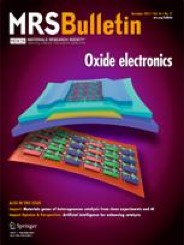  | Schröter Manuel; Wang, Congwei; Terrigno Marco; Hornauer Philipp; Huang Ziqiang; Jagasia Ravi; Hierlemann Andreas Functional imaging of brain organoids using high-density microelectrode arrays Journal Article MRS Bulletin, 2022. @article{Schroter2022, title = {Functional imaging of brain organoids using high-density microelectrode arrays}, author = {Schröter, Manuel; Wang, Congwei; Terrigno, Marco; Hornauer, Philipp; Huang, Ziqiang; Jagasia, Ravi; Hierlemann, Andreas}, url = {https://link.springer.com/article/10.1557/s43577-022-00282-w}, year = {2022}, date = {2022-06-30}, journal = {MRS Bulletin}, abstract = {Studies have provided evidence that human cerebral organoids (hCOs) recapitulate fundamental milestones of early brain development, but many important questions regarding their functionality and electrophysiological properties persist. High-density microelectrode arrays (HD-MEAs) represent an attractive analysis platform to perform functional studies of neuronal networks at the cellular and network scale. Here, we use HD-MEAs to derive large-scale electrophysiological recordings from sliced hCOs. We record the activity of hCO slices over several weeks and probe observed neuronal dynamics pharmacologically. Moreover, we present results on how the obtained recordings can be spike-sorted and subsequently studied across scales. For example, we show how to track single neurons across several days on the HD-MEA and how to infer axonal action potential velocities. We also infer putative functional connectivity from hCO recordings. The introduced methodology will contribute to a better understanding of developing neuronal networks in brain organoids and provide new means for their functional characterization.}, keywords = {}, pubstate = {published}, tppubtype = {article} } Studies have provided evidence that human cerebral organoids (hCOs) recapitulate fundamental milestones of early brain development, but many important questions regarding their functionality and electrophysiological properties persist. High-density microelectrode arrays (HD-MEAs) represent an attractive analysis platform to perform functional studies of neuronal networks at the cellular and network scale. Here, we use HD-MEAs to derive large-scale electrophysiological recordings from sliced hCOs. We record the activity of hCO slices over several weeks and probe observed neuronal dynamics pharmacologically. Moreover, we present results on how the obtained recordings can be spike-sorted and subsequently studied across scales. For example, we show how to track single neurons across several days on the HD-MEA and how to infer axonal action potential velocities. We also infer putative functional connectivity from hCO recordings. The introduced methodology will contribute to a better understanding of developing neuronal networks in brain organoids and provide new means for their functional characterization. |
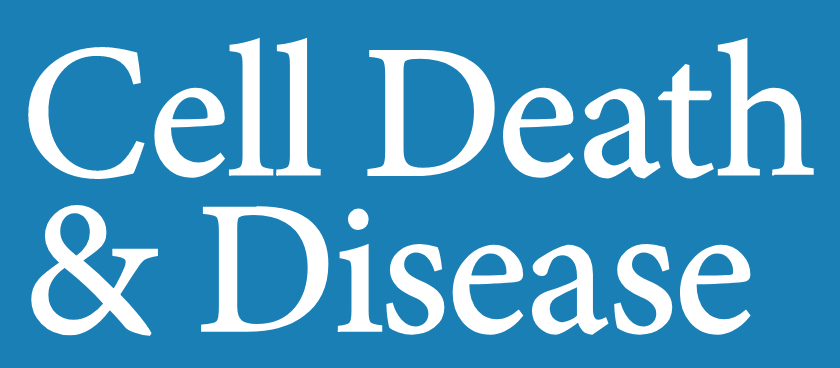  | Battaglia, Chiara R; Cursano, Silvia; Calzia, Enrico; Catanese, Alberto; Boeckers, Tobias M Corticotropin-releasing hormone (CRH) alters mitochondrial morphology and function by activating the NF-kB-DRP1 axis in hippocampal neurons Journal Article Cell Death & Disease, 2020. @article{Battaglia2020, title = {Corticotropin-releasing hormone (CRH) alters mitochondrial morphology and function by activating the NF-kB-DRP1 axis in hippocampal neurons}, author = {Chiara R. Battaglia and Silvia Cursano and Enrico Calzia and Alberto Catanese and Tobias M. Boeckers }, url = {https://www.nature.com/articles/s41419-020-03204-3}, doi = {https://doi.org/10.1038/s41419-020-03204-3}, year = {2020}, date = {2020-11-23}, journal = {Cell Death & Disease}, abstract = {Neuronal stress-adaptation combines multiple molecular responses. We have previously reported that thorax trauma induces a transient loss of hippocampal excitatory synapses mediated by the local release of the stress-related hormone corticotropin-releasing hormone (CRH). Since a physiological synaptic activity relies also on mitochondrial functionality, we investigated the direct involvement of mitochondria in the (mal)-adaptive changes induced by the activation of neuronal CRH receptors 1 (CRHR1). We observed, in vivo and in vitro, a significant shift of mitochondrial dynamics towards fission, which correlated with increased swollen mitochondria and aberrant cristae. These morphological changes, which are associated with increased NF-kB activity and nitric oxide concentrations, correlated with a pronounced reduction of mitochondrial activity. However, ATP availability was unaltered, suggesting that neurons maintain a physiological energy metabolism to preserve them from apoptosis under CRH exposure. Our findings demonstrate that stress-induced CRHR1 activation leads to strong, but reversible, modifications of mitochondrial dynamics and morphology. These alterations are accompanied by bioenergetic defects and the reduction of neuronal activity, which are linked to increased intracellular oxidative stress, and to the activation of the NF-kB/c-Abl/DRP1 axis. }, keywords = {}, pubstate = {published}, tppubtype = {article} } Neuronal stress-adaptation combines multiple molecular responses. We have previously reported that thorax trauma induces a transient loss of hippocampal excitatory synapses mediated by the local release of the stress-related hormone corticotropin-releasing hormone (CRH). Since a physiological synaptic activity relies also on mitochondrial functionality, we investigated the direct involvement of mitochondria in the (mal)-adaptive changes induced by the activation of neuronal CRH receptors 1 (CRHR1). We observed, in vivo and in vitro, a significant shift of mitochondrial dynamics towards fission, which correlated with increased swollen mitochondria and aberrant cristae. These morphological changes, which are associated with increased NF-kB activity and nitric oxide concentrations, correlated with a pronounced reduction of mitochondrial activity. However, ATP availability was unaltered, suggesting that neurons maintain a physiological energy metabolism to preserve them from apoptosis under CRH exposure. Our findings demonstrate that stress-induced CRHR1 activation leads to strong, but reversible, modifications of mitochondrial dynamics and morphology. These alterations are accompanied by bioenergetic defects and the reduction of neuronal activity, which are linked to increased intracellular oxidative stress, and to the activation of the NF-kB/c-Abl/DRP1 axis. |
Discover More
Would you like to learn more about MaxTwo? Book a one-to-one call with one of our scientist to discuss how MaxWell Biosystems’ high-content electrophysiology solutions can bring new key insights to your project or request a quote.
Support
We provide training and support on all aspects of the MaxTwo platform. We have the expertise to help you design experiments and/or analysis tools and integrate MaxTwo with your automation system.
Ask a Question English
English


